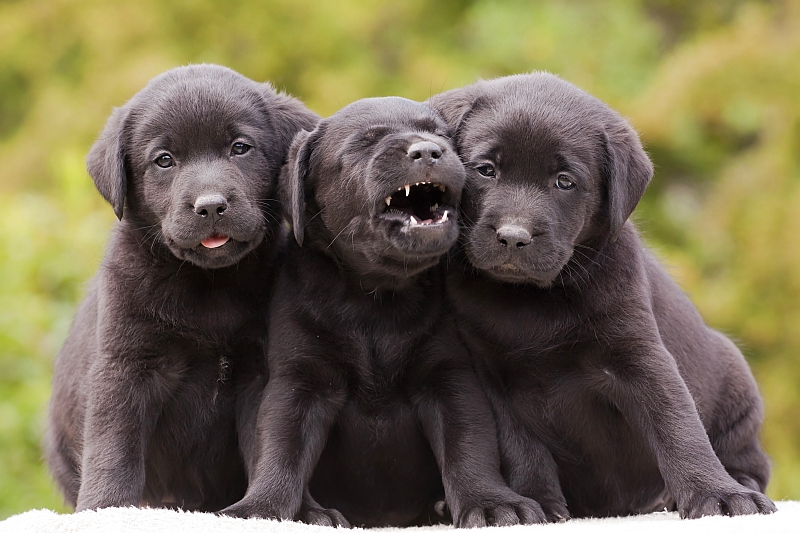Puppy teeth are like little needles, but they don’t stay like that for long, as the teething process replaces the puppy teeth with adult canine teeth. Puppies are born without any teeth, but the teething process beings about three weeks after birth, and by the eighth week a puppy will have a full set of 28 deciduous teeth. During and until the adult teeth come in, your puppy will most likely target a variety of objects with her teeth in order to relieve itching and pain as new teeth erupt.
Teething Progression
A puppy’s teething progression can provide a rough guide for the age of the puppy, with some variety from one breed to another. This predictable progression of teeth eruption is as follows:
- At two to three weeks: The incisors are the first teeth to come in, which are in the front of the mouth (six on the upper jaw, and six on the lower).
- Around four weeks: The canines appear at this stage, and look more like needles than teeth with extremely sharp tips. There are four canine teeth on either side of the set of incisors (both on top and bottom)
- At three to six weeks: During this three-week period the premolars erupt in groups of three on each side of the mouth, both on the upper and lower jaw.
- At six to eight weeks: The last of the teeth, the molars, appear during this period.
The Permanent (Adult) Teeth
The adult teeth of a puppy will start pushing out the deciduous teeth starting at around 8 weeks of age. More often than not, the puppy teeth will simply fall out, and the roots of the teeth reabsorbed into the body. All baby teeth are replaced at this time, and 14 more added for a total of 42 teeth. The newly added teeth include four premolars and ten molars. The process will fully complete at around seven months of age.
In some cases, puppies may not lose all of their deciduous teeth, in which case they will need to be extracted by a veterinarian.
Keeping a Healthy Set of Teeth
Puppy teeth usually do not need cleaning and maintenance as they are replaced with adult teeth relatively quickly; just make sure your puppy does not have any broken or chipped teeth caused by gnawing or biting on unusual objects in and around the house.
Brushing your dog’s teeth on a regular basis (weekly, or even daily if you have the time), by using a toothbrush especially designed for that purpose—don’t just use your old toothbrush. To help make this process easier when they are older, it is important to start at a young age, and get them used to having you handle their mouth and teeth. You can play with them and use a dog toothbrush at a young age to playfully brush their teeth when they are still very young. This will help make the process less intimidating when they are older and in need of regular brushing.

